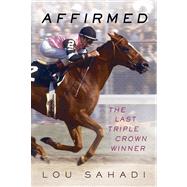
Note: Supplemental materials are not guaranteed with Rental or Used book purchases.
Purchase Benefits
What is included with this book?
| Foreword | p. ix |
| Preface | p. xiii |
| How It All Began | p. 1 |
| Louis Wolfson: A Junk Dealer's Son | p. 11 |
| A Heartbroken Man | p. 20 |
| Steve Cauthen: The Kid | p. 29 |
| The 1977 Season | p. 48 |
| The Derby and Calumet | p. 59 |
| Road to the Derby | p. 64 |
| The Derby | p. 80 |
| Derby Week | p. 80 |
| Derby Day | p. 98 |
| The Preakness | p. 118 |
| Race Day | p. 131 |
| The Belmont | p. 146 |
| The Race | p. 161 |
| The Final Turn | p. 187 |
| Laffit Pincay: Affirmed's New Jockey | p. 227 |
| Epilogue | p. 244 |
| Acknowledgments | p. 251 |
| The Horse Affirmed: Fact Sheet | p. 255 |
| Affirmed Stats | p. 257 |
| Bloodlines: 1975 Chestnut Colt | p. 259 |
| Affirmed Racing History | p. 260 |
| Race Histories | p. 266 |
| Bibliography | p. 269 |
| Index | p. 271 |
| Table of Contents provided by Ingram. All Rights Reserved. |
The New copy of this book will include any supplemental materials advertised. Please check the title of the book to determine if it should include any access cards, study guides, lab manuals, CDs, etc.
The Used, Rental and eBook copies of this book are not guaranteed to include any supplemental materials. Typically, only the book itself is included. This is true even if the title states it includes any access cards, study guides, lab manuals, CDs, etc.